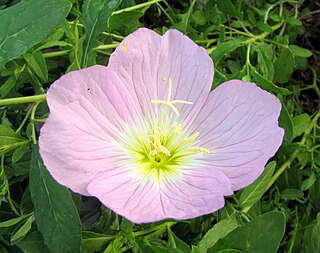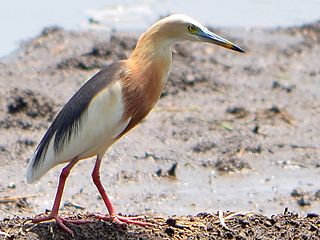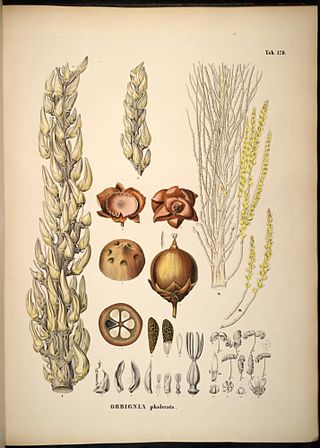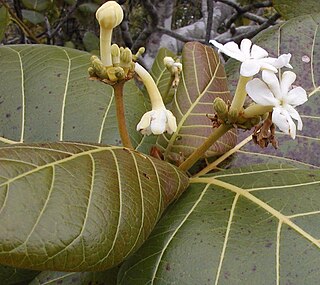
Ceiba is a genus of trees in the family Malvaceae, native to tropical and subtropical areas of the Americas and tropical West Africa. Some species can grow to 70 m (230 ft) tall or more, with a straight, largely branchless trunk that culminates in a huge, spreading canopy, and buttress roots that can be taller than a grown person. The best-known, and most widely cultivated, species is Kapok, Ceiba pentandra, one of several trees known as kapok. Ceiba is a word from the Taíno language meaning "boat" because Taínos use the wood to build their dugout canoes.

Catalpa, commonly also called catawba, is a genus of flowering plants in the family Bignoniaceae, native to warm temperate and subtropical regions of North America, the Caribbean, and East Asia.

Chaenomeles is a genus of four species of deciduous spiny shrubs, usually 1–3 m tall, in the family Rosaceae. They are native to Southeast Asia. These plants are related to the quince and the Chinese quince, differing in the serrated leaves that lack fuzz, and in the flowers, borne in clusters, having deciduous sepals and styles that are connate at the base.

Mitragyna speciosa is a tropical evergreen tree in the coffee family native to Southeast Asia. It is indigenous to Thailand, Indonesia, Malaysia, Myanmar, and Papua New Guinea, where it has been used in herbal medicine since at least the 19th century. It has also historically been used for chewing, smoking, and tea. Kratom has opioid properties and some stimulant-like effects.

Oenothera speciosa is a species in the evening primrose family known by several common names, including pinkladies, pink evening primrose, showy evening primrose, Mexican primrose, and buttercups.

Ceiba speciosa, the floss silk tree, is a species of deciduous tree that is native to the tropical and subtropical forests of South America. It has several local common names, such as palo borracho, or árbol del puente, samu'ũ, or paineira. In Bolivia, it is called toborochi, meaning "tree of refuge" or "sheltering tree". In the USA it often is called the silk floss tree. It belongs to the same family as the baobab; the species Bombax ceiba; and other kapok trees. Another tree of the same genus, Ceiba chodatii, is often referred to by the same common names.

Catalpa speciosa, commonly known as the northern catalpa, hardy catalpa, western catalpa, cigar tree or catawba, is a species of Catalpa native to the midwestern United States.

Lagerstroemia speciosa is a species of Lagerstroemia native to tropical southern Asia. It is a deciduous tree with bright pink to light purple flowers.

Banksia speciosa, commonly known as the showy banksia, is a species of large shrub or small tree in the family Proteaceae. It is found on the south coast of Western Australia between Hopetoun (33°57′ S) and the Great Australian Bight, growing on white or grey sand in shrubland. Reaching up to 8 m (26 ft) in height, it is a single-stemmed plant that has thin leaves with prominent triangular "teeth" along each margin, which are 20–45 cm (7.9–17.7 in) long and 2–4 cm (0.8–1.6 in) wide. The prominent cream-yellow flower spikes known as inflorescences appear throughout the year. As they age they develop up to 20 follicles each that store seeds until opened by fire. Though widely occurring, the species is highly sensitive to dieback and large populations of plants have succumbed to the disease.

The Javan pond heron is a wading bird of the heron family, found in shallow fresh and salt-water wetlands in Southeast Asia. Its diet comprises insects, fish, and crabs.

Chaenomeles speciosa, the flowering quince, Chinese quince or Japanese quince, is a thorny deciduous or semi-evergreen shrub native to eastern Asia. It is taller than another commonly cultivated species, C. japonica, usually growing to about 2 m. The flowers are usually red, but may be white or pink. The fruit is a fragrant, hard pome that resembles a quince.

Attalea speciosa, the babassu, babassu palm, babaçu, or cusi, is a palm native to the Amazon Rainforest region in South America. The babassu palm is the predominant species in the Maranhão Babaçu forests of Maranhão and Piauí states.

7-Hydroxymitragynine is a terpenoid indole alkaloid from the plant Mitragyna speciosa, commonly known as kratom. It is often referred to as ‘7-OH’. It was first described in 1994 and is a natural product derived from the mitragynine present in the kratom leaf. It is considered an oxidized derivative and active metabolite of mitragynine. 7-OH binds to opioid receptors like mitragynine, but research suggests that 7-OH binds with greater potency and contributes heavily to the analgesic activity of mitragynine as a metabolite.

Prunus speciosa, the Oshima cherry, Japanese オオシマザクラ, is native to Izu Ōshima island and the Izu Peninsula on Honshū near Tokyo, Japan.

Guettarda speciosa, with common names sea randa, or zebra wood, is a species of shrub in the family Rubiaceae found in coastal habitats in tropical areas around the Pacific Ocean, including the coastline of central and northern Queensland and Northern Territory in Australia, and Pacific Islands, including Micronesia, French Polynesia and Fiji, Malaysia and Indonesia, Maldives and the east coast of Africa. It reaches 6 m in height, has fragrant white flowers, and large green prominently-veined leaves. It grows in sand above the high tide mark.

Solidago speciosa, the showy goldenrod, is a North American species of flowering plants in the family Asteraceae. It grows in the province of Ontario in central Canada, as well as in the eastern and central United States.

Phasianella, common name the pheasant shells, is a genus of small sea snails with a calcareous operculum and a colorfully patterned shell, a marine gastropod mollusc in the family Phasianellidae.

Xestia speciosa is a moth of the family Noctuidae. It is found in northern Europe, including Fennoscandia, the Baltic region, parts of Russia and further through northern Asia to the Pacific Ocean and Japan. It is also found in the mountainous areas of central and southern Europe. It is also present in north-western North America.
Speciosa is an Irish-bred, British-trained Thoroughbred racehorse. In a racing career which lasted from June 2005 and October 2007 she ran seventeen times and won four races. As a two-year-old, she won two of her six races including an upset win in the Group Two Rockfel Stakes at Newmarket Racecourse. As a three-year-old she won the Nell Gwyn Stakes and then took the Classic 1000 Guineas for her trainer and part owner Pam Sly. She failed to win in nine subsequent races although she placed second in the Earl of Sefton Stakes and the Pretty Polly Stakes. She was retired at the end of the 2007 season to become a broodmare. Her front-running style and unconventional background made her a popular Classic winner.

Pterolophia is a genus of longhorn beetles of the subfamily Lamiinae, containing the following species:


















